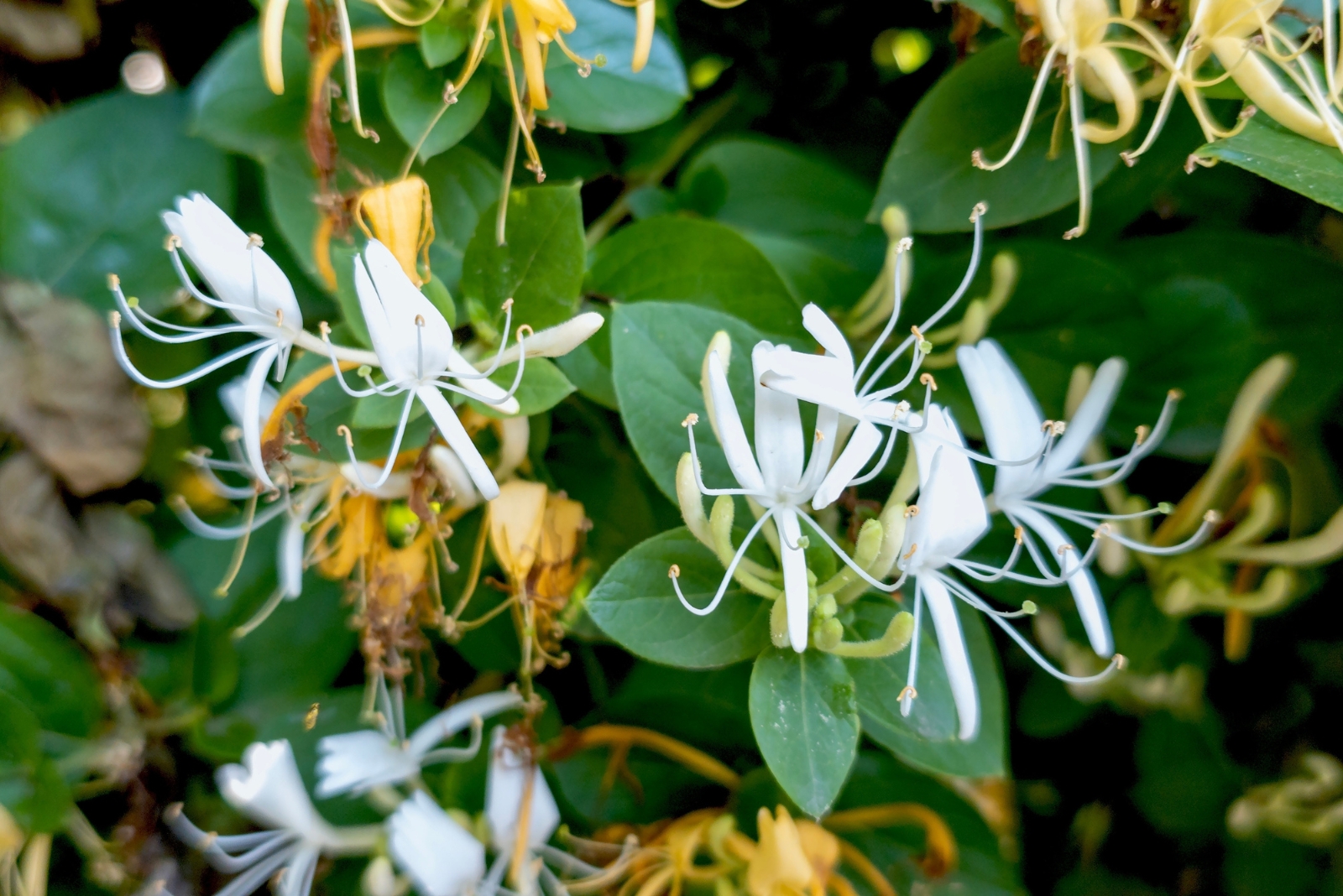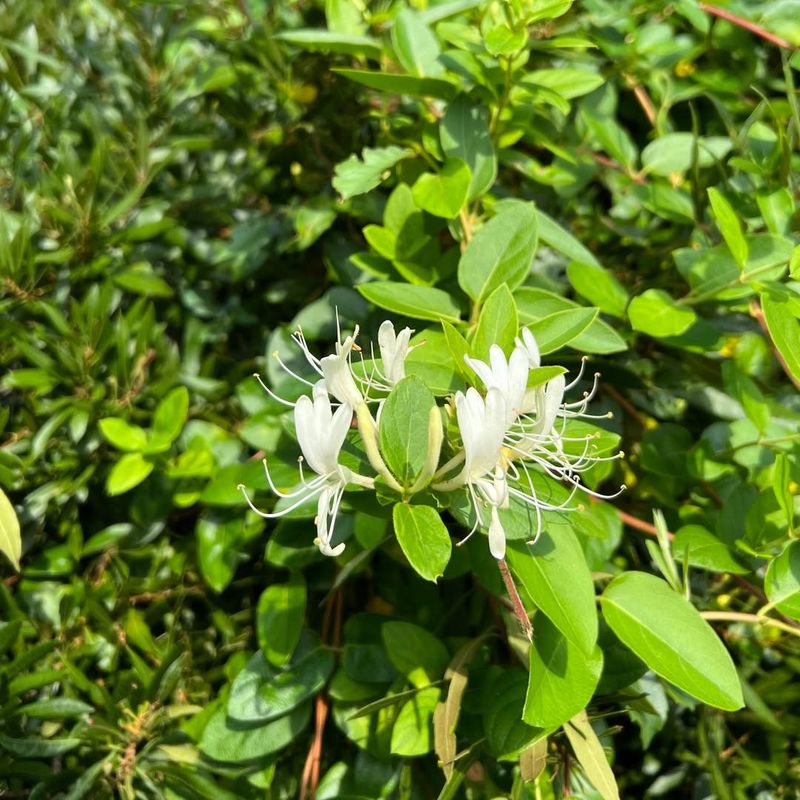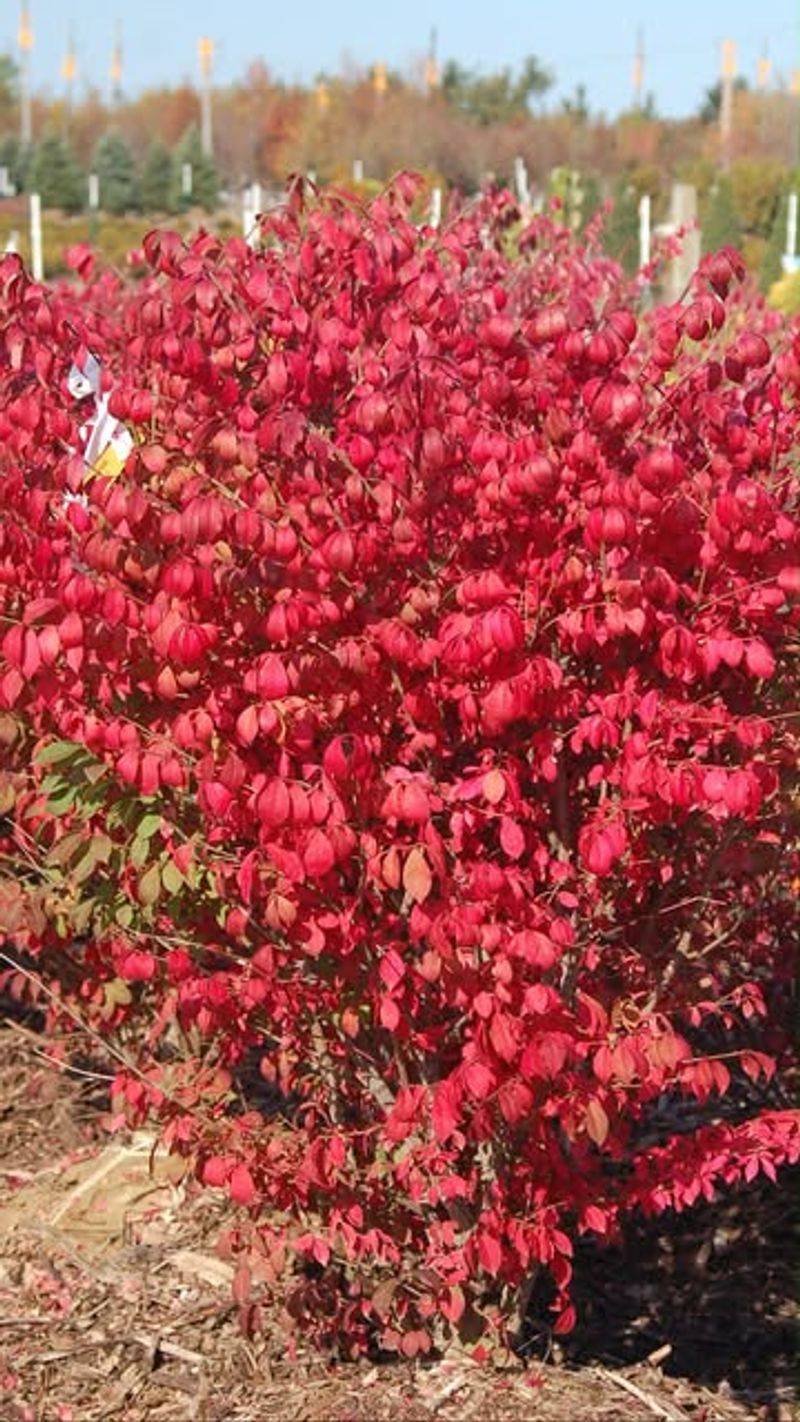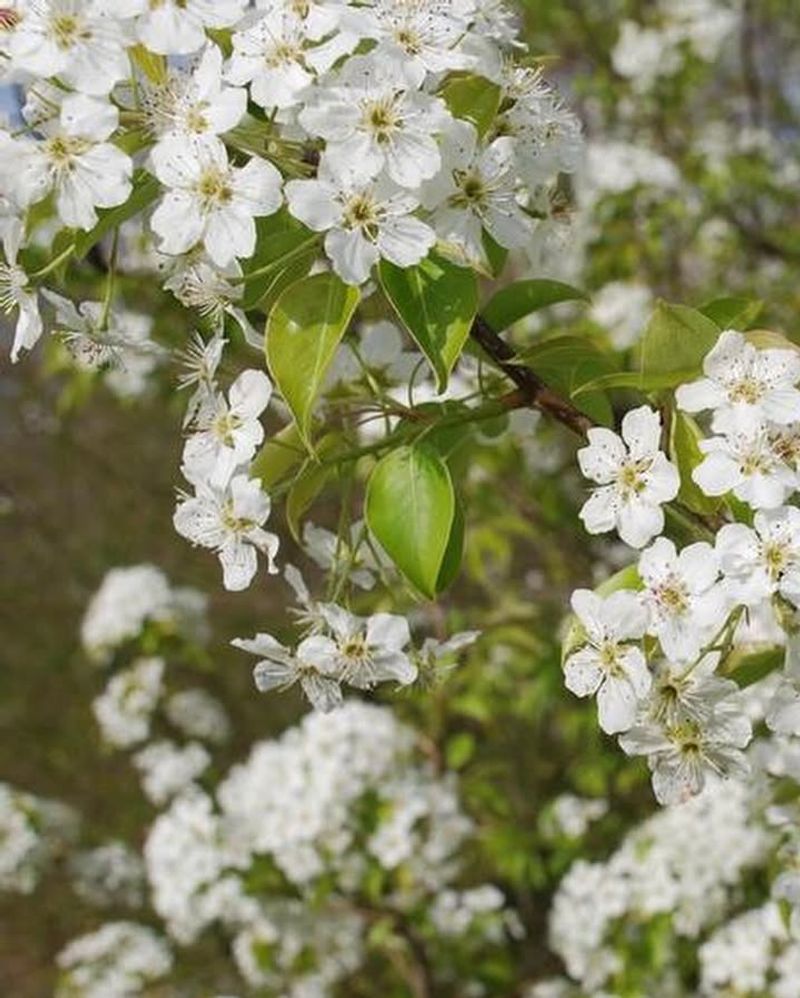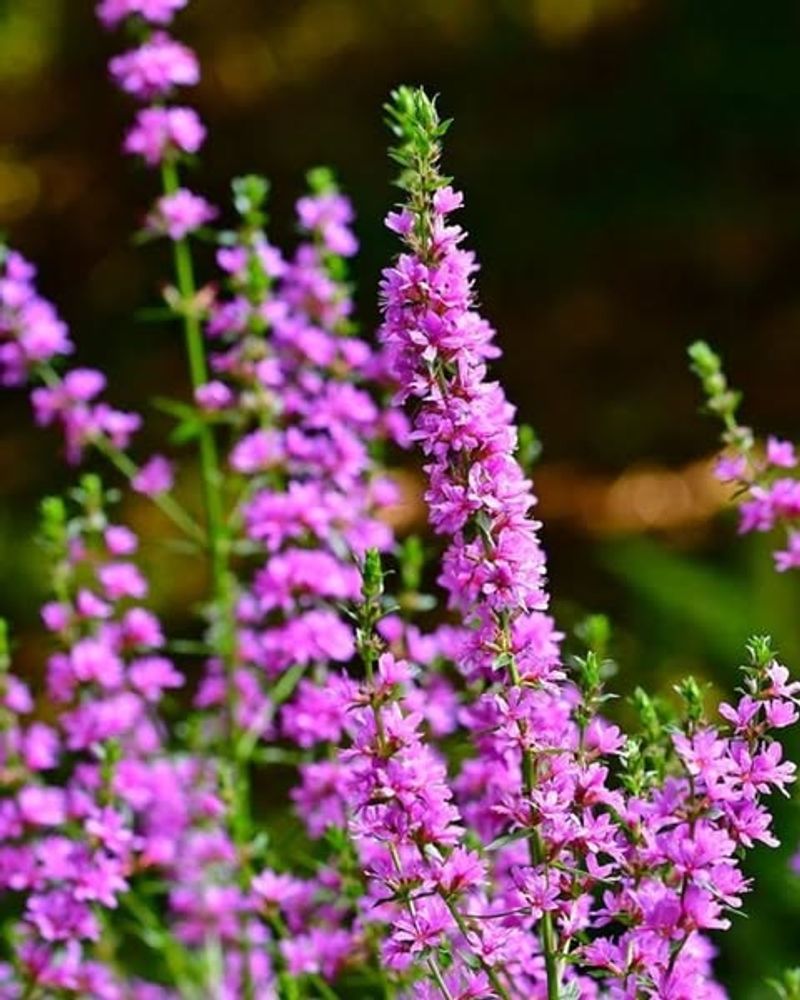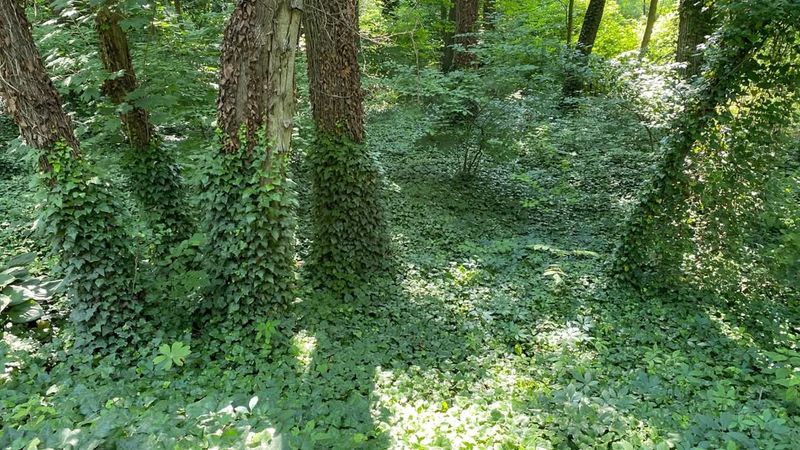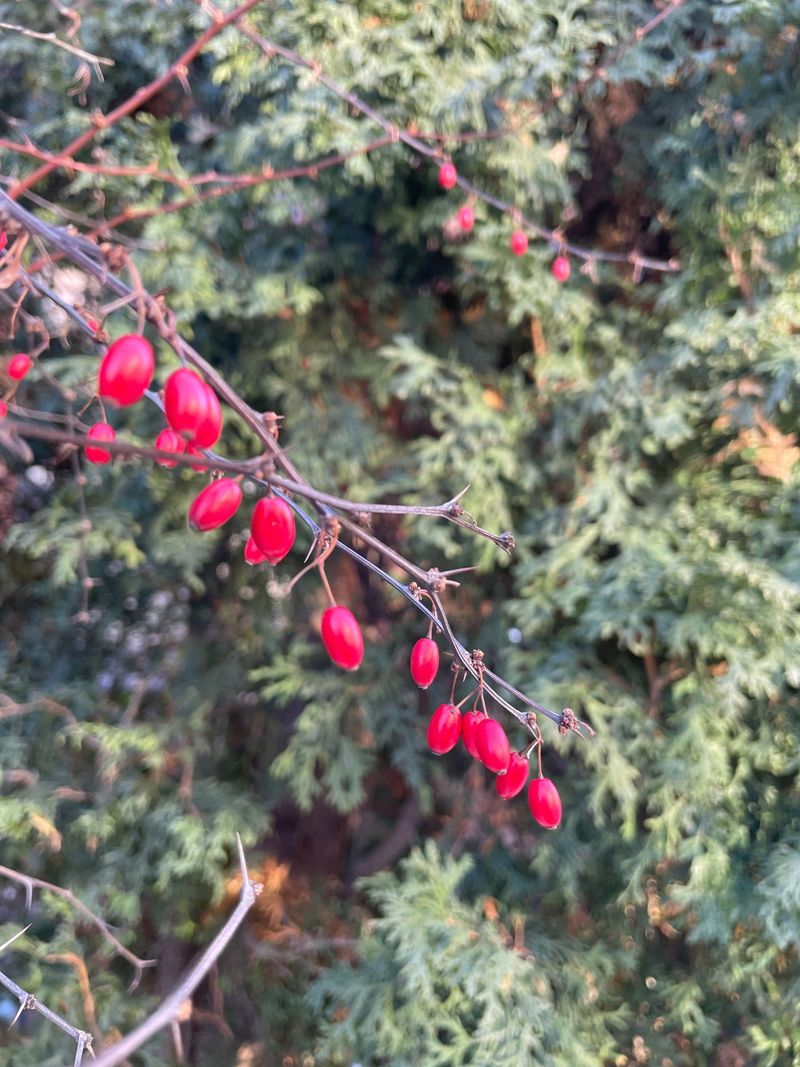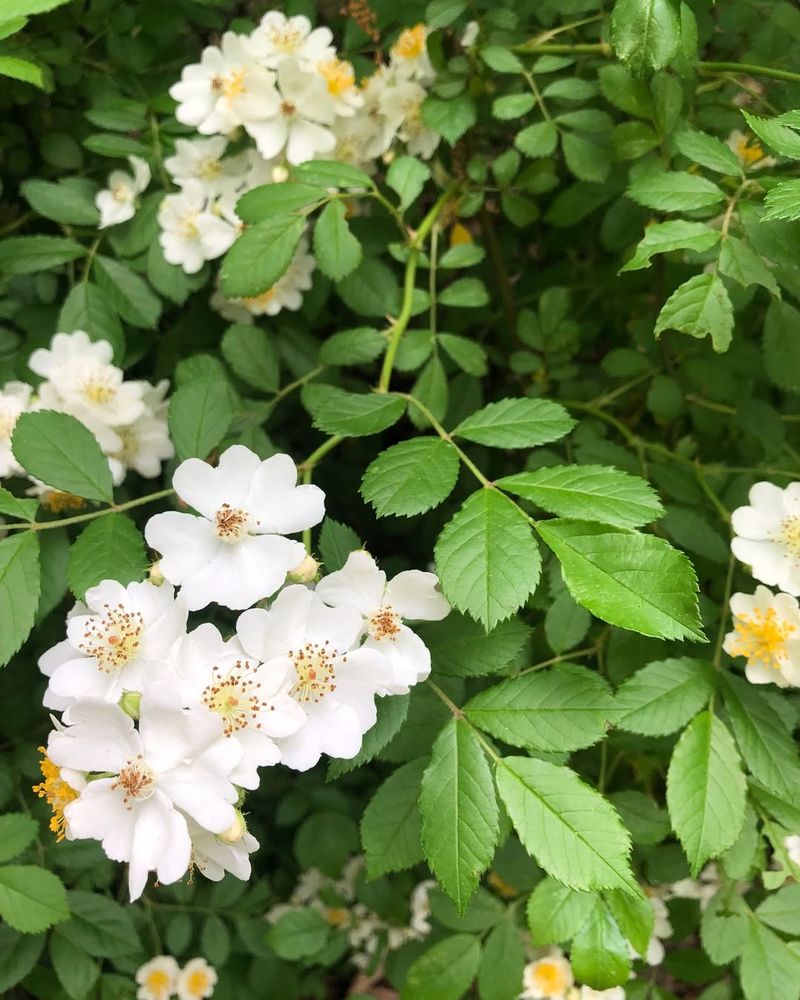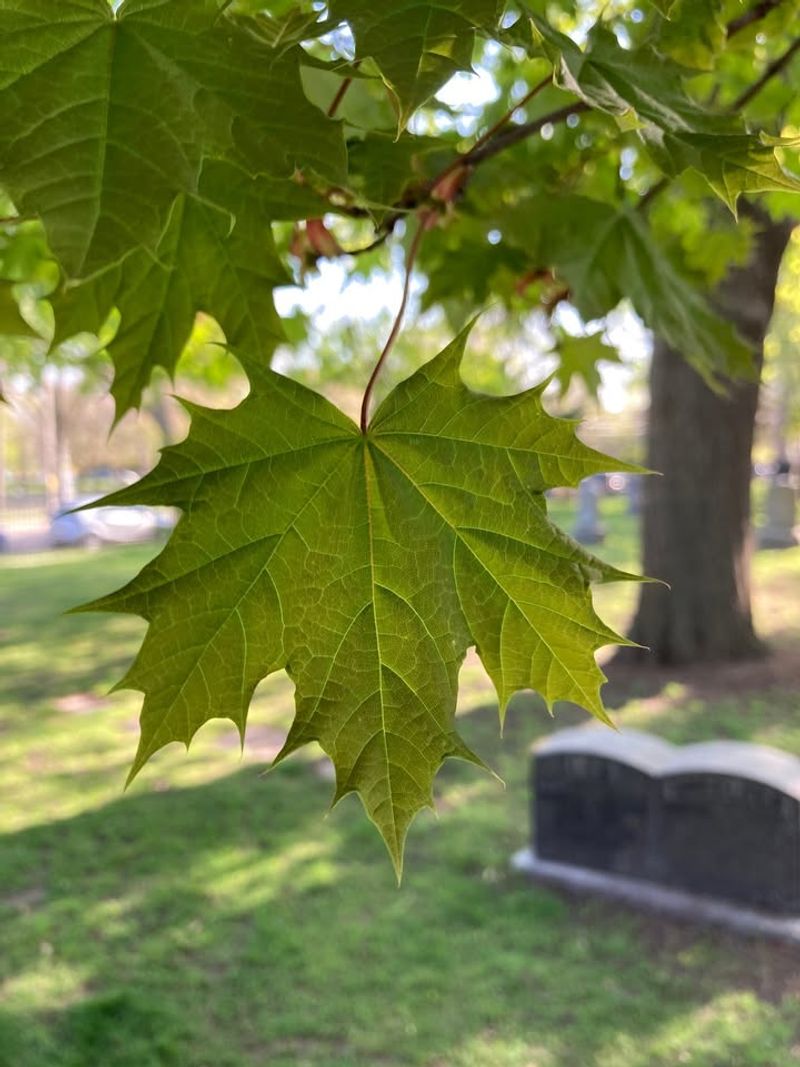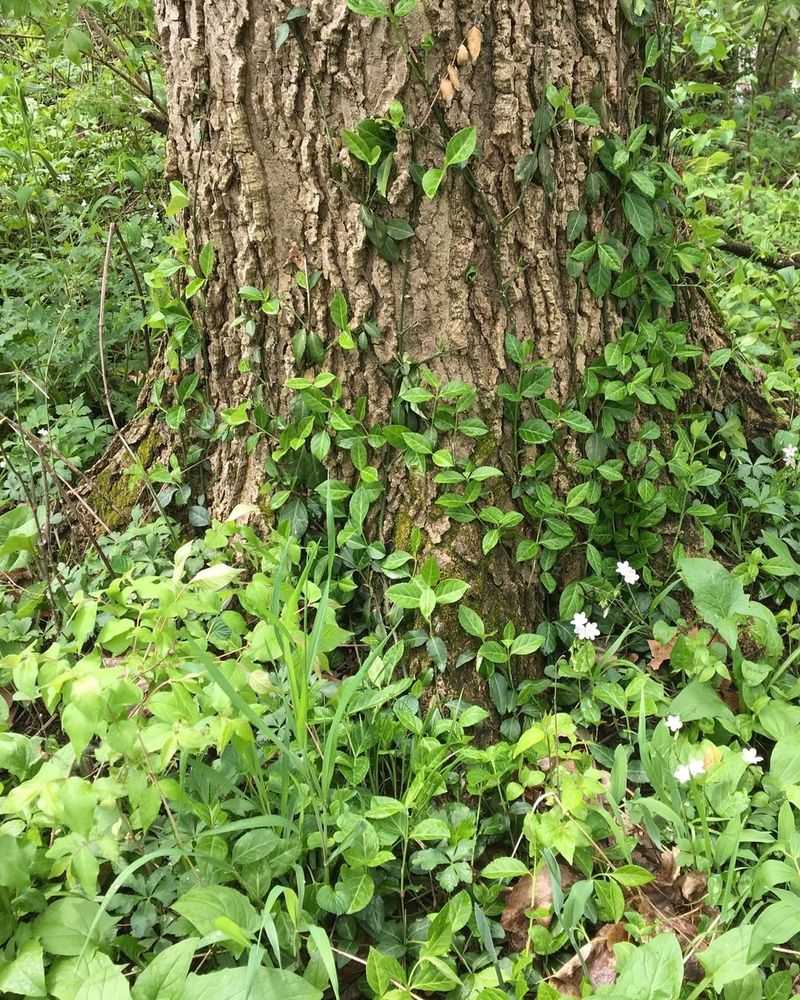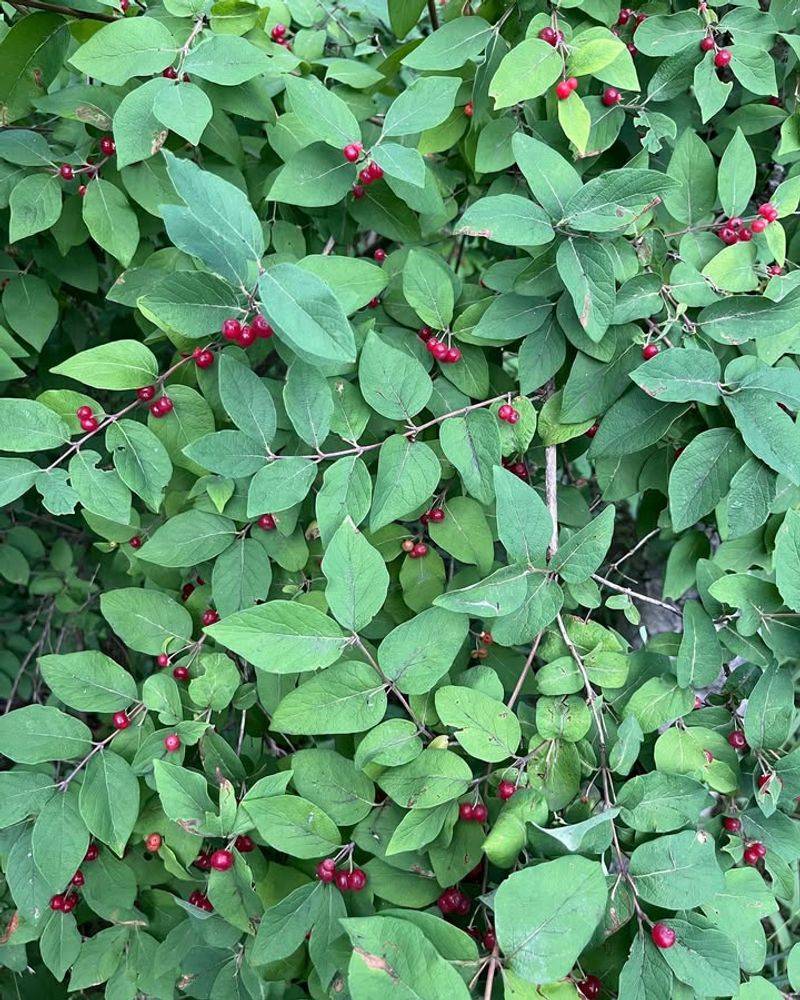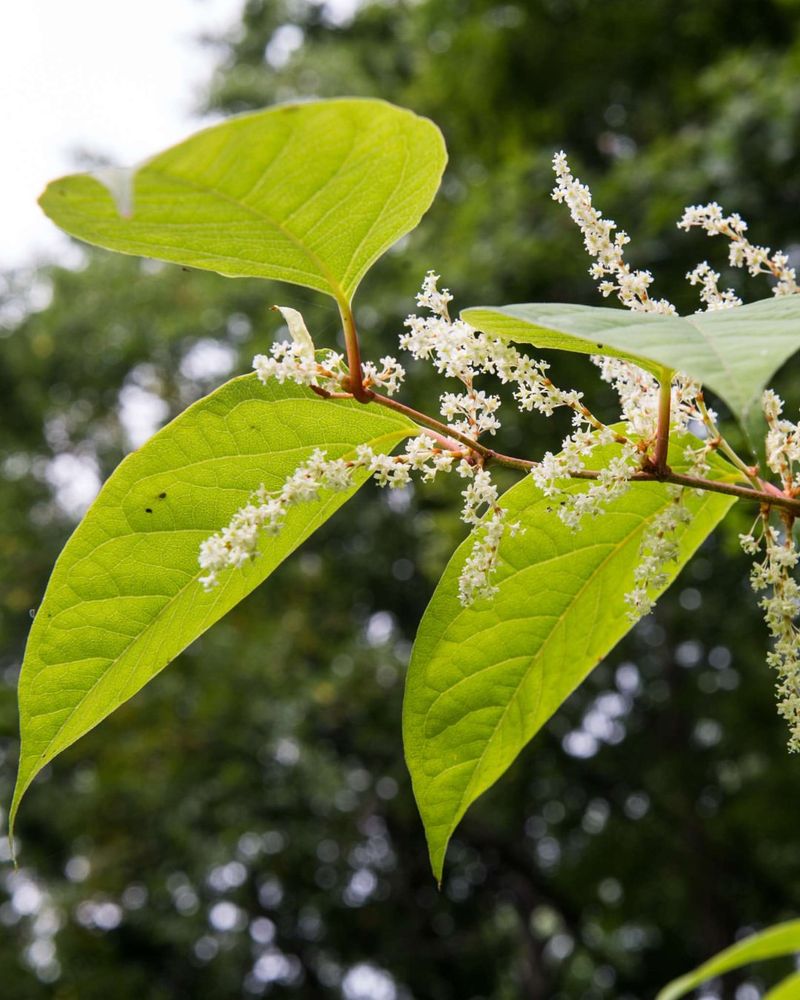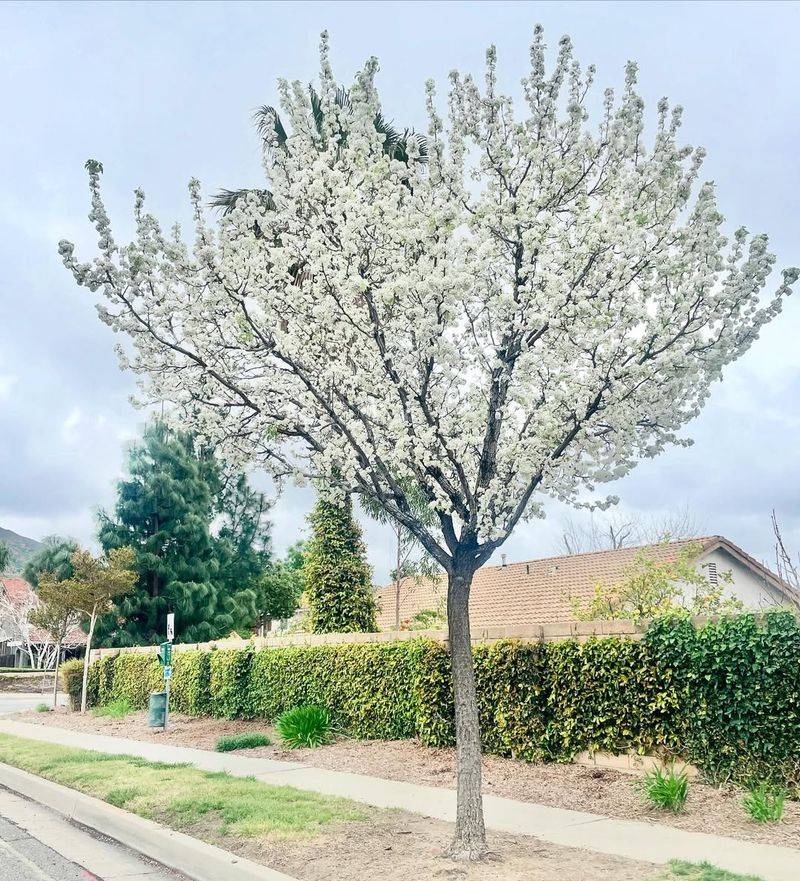Ohio gardens are full of tempting plants, but not all of them belong in your yard. Some can quickly take over and cause headaches you don’t want.
I’ve made a list of the troublemakers to steer clear of. Keep your garden happy and healthy by avoiding these sneaky invaders.
1. Japanese Honeysuckle
Sweet-smelling flowers might tempt you at the garden center, but Japanese honeysuckle becomes a nightmare once planted. It wraps around trees and shrubs like a python, eventually strangling them to death.
Throughout Ohio, this aggressive vine has destroyed countless native plants in forests and parks. Birds spread its seeds everywhere, making control nearly impossible once established. Native honeysuckle varieties offer similar beauty without the destructive behavior, so choose those instead for your Ohio garden.
2. Burning Bush
Garden centers across Ohio still sell this shrub because of its stunning crimson fall color. However, burning bush escapes yards easily and invades natural areas where it shades out wildflowers and young trees.
Birds gobble up the seeds and deposit them miles away in Ohio’s forests and prairies. Native alternatives like Virginia sweetspire provide gorgeous autumn colors without threatening ecosystems. Your neighbors might have burning bush, but that doesn’t mean you should add to the problem in Ohio.
3. Bradford Pear
Pretty white blooms fool many Ohio shoppers into buying Bradford pears each spring. Unfortunately, these trees have weak branches that break during storms, creating dangerous situations and expensive cleanup bills.
Worse yet, they produce thousands of seeds that sprout into thorny thickets throughout Ohio’s countryside. The flowers smell like rotting fish, which isn’t pleasant for backyard barbecues. Native serviceberry trees bloom beautifully in spring and actually benefit Ohio wildlife instead of harming it.
4. Purple Loosestrife
Those gorgeous purple spikes look amazing in garden center displays, making purple loosestrife a popular impulse buy. Each plant produces millions of tiny seeds that travel on wind, water, and animal fur to Ohio’s wetlands.
Once established, it forms dense stands that push out cattails and other native plants that ducks and geese need. Ohio’s marshes and pond edges suffer greatly when this plant invades. Choose native cardinal flower or ironweed for similar purple blooms that support local pollinators.
5. English Ivy
Gardeners love English ivy because it stays green year-round and covers bare ground quickly. That quick growth becomes a serious problem when it climbs trees, adding weight that causes them to fall during Ohio’s winter ice storms.
The dense mats prevent native wildflowers from sprouting in spring. It harbors pests and diseases that spread to other plants in Ohio neighborhoods. Native wild ginger or Pennsylvania sedge make excellent ground covers without the destructive tendencies.
6. Japanese Barberry
Landscapers throughout Ohio have planted Japanese barberry for decades because deer won’t eat it. Research now shows these thorny shrubs create perfect habitat for blacklegged ticks that carry Lyme disease.
Birds spread the bright red berries into forests where barberry forms impenetrable thickets. Native spicebush offers similar size and shape while providing food for beautiful swallowtail butterflies. Protecting your family from tick-borne illness is another great reason to avoid this plant in Ohio gardens.
7. Multiflora Rose
Some Ohio garden centers still market multiflora rose as a living fence or wildlife food source. The reality is quite different once those fragrant white flowers turn into thousands of seeds.
Sharp thorns make removal painful and difficult after it escapes into pastures and woodlands across Ohio. Cattle and horses can’t graze where it forms tangled thickets. Native roses like Carolina rose provide beauty and wildlife value without becoming agricultural nightmares. Your hands will thank you for avoiding this thorny troublemaker.
8. Norway Maple
Norway maples appear in almost every Ohio garden center because they tolerate urban conditions well. Beneath their dense shade, absolutely nothing else can grow because the shallow roots steal all moisture and nutrients.
Seedlings pop up everywhere in Ohio yards, gardens, and forests, crowding out native sugar maples and oaks. The thick leaf litter changes soil chemistry, making conditions worse for native plants. Red maple or Ohio buckeye trees provide shade without destroying everything beneath them in your Ohio landscape.
9. Wintercreeper
Garden centers promote wintercreeper as a tough evergreen ground cover for difficult Ohio sites. It certainly is tough, growing so aggressively that it smothers native wildflowers and climbs trees like English ivy.
The waxy leaves prevent decomposition, building up layers that further suppress native plants. Ohio forests near old homesteads often suffer from wintercreeper invasions that started in someone’s yard decades ago. Allegheny spurge or native pachysandra provide similar evergreen coverage without the invasive behavior.
10. Amur Honeysuckle
Walk through any Ohio woodland in early spring and you’ll notice Amur honeysuckle leafing out weeks before native plants. That early start allows it to steal sunlight and resources from wildflowers trying to bloom.
Garden centers sometimes sell it as a fast-growing privacy screen, which it certainly provides until it escapes into natural areas. The red berries look nutritious but actually provide poor nutrition for Ohio birds. Spicebush or elderberry shrubs offer better food for wildlife while respecting property boundaries.
11. Japanese Knotweed
Occasionally spotted at Ohio garden centers as an ornamental, Japanese knotweed ranks among the world’s worst invasive plants. Its roots can crack foundations, damage septic systems, and push through asphalt driveways.
A tiny piece of root generates a whole new plant, making removal incredibly difficult and expensive across Ohio. Some states actually require disclosure when selling property infested with it. Native Joe-Pye weed grows tall with similar pink flowers but won’t destroy your home’s foundation or your wallet.
12. Callery Pear Cultivars
Garden centers now sell alternatives to Bradford pear with names like Cleveland Select and Chanticleer. Don’t be fooled—all Callery pear varieties can cross-pollinate and produce invasive offspring throughout Ohio.
Those thorny seedlings create impenetrable thickets in pastures, roadsides, and forest edges across the state. Several states have actually banned sales of all Callery pear cultivars because of environmental damage. Serviceberry, redbud, or dogwood trees provide stunning spring flowers without threatening Ohio’s native ecosystems or future generations.

